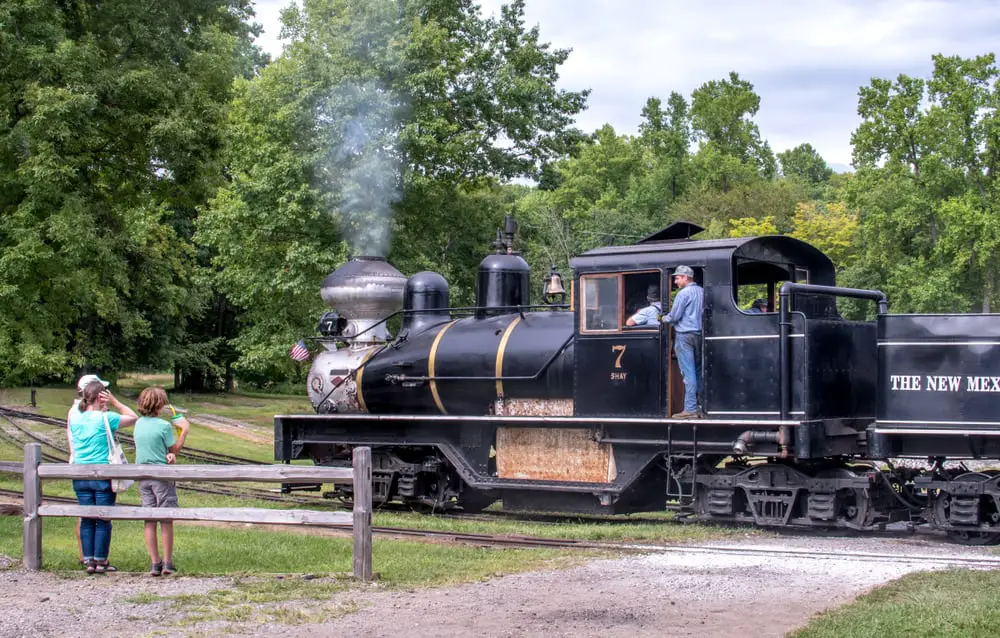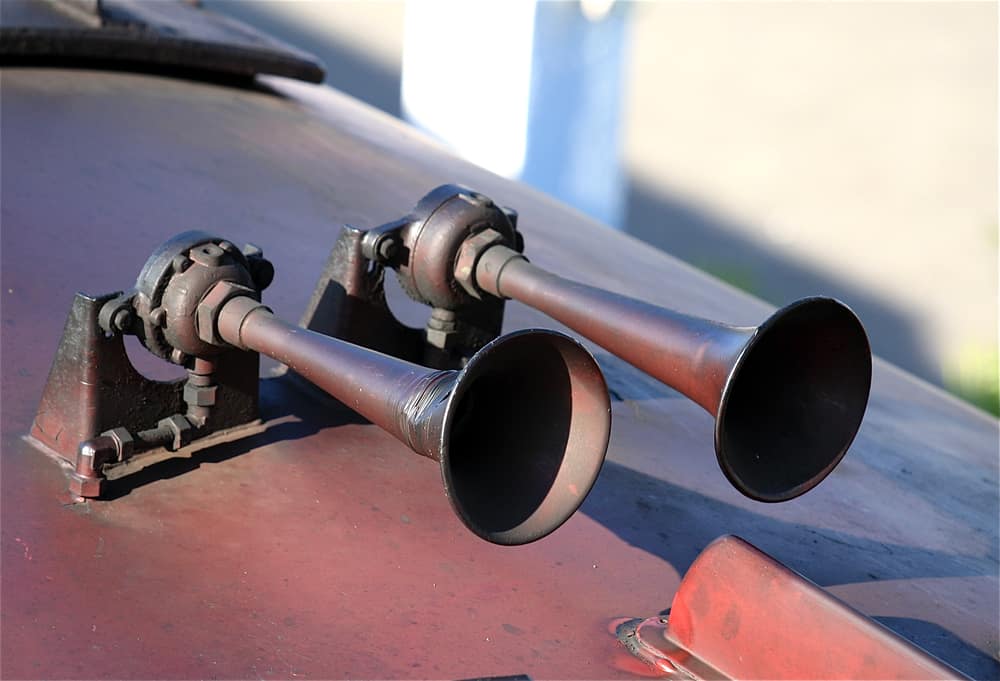
Since the beginning of the railroad, whistles, bells, and horns have been used by trains in railway stations and at railroad crossings. But when diesel trains replaced the steam trains, they were fitted with small truck horns.
However, these were not suitable. The air horn was then adapted but still sounded like a truck horn. So, the more musical air horn of today was created. But why do trains blow their horns?
A Train blows its horn, warning people, vehicles, and animals that a train is approaching. The horn must be sounded at railroad crossings. The sound is very loud so that it can be heard from a great distance. The horn is also used to communicate with other railroad employees.
Today’s modern trains still use their horns as a means of communication. Read on to learn more about when a train’s horn is used and what the different blasts mean.
Train Horns – Why Are They Used?

From the early days to modern times, the train horn has been a vital part of railroad transportation.
Wherever you go, the railroad plays a role in transporting people and goods. And wherever there’s a train, you will definitely, at some stage, hear its horn. These horns are usually very loud (96 to 110 decibels) and can be heard from a great distance.
All electric and diesel trains must be fitted with a horn. The horn serves as a safety warning device to alert vehicles, pedestrians, and even animals, that a train is approaching.
But the train horn is also used as a communication tool to acknowledge signals given by railroad employees. Steam trains, of which only a few are still operating today, are fitted with a whistle or steam trumpet.
Train Horns Are Used As A Warning Signal
The operating rules of the North American railroads have a long list of all the different horn signals. Various long and short blasts are used as warning signals to the public and animals.
Even though modern trains are fitted with radios, horns are still used to communicate with fellow employees. Signals are constantly being updated to keep up with modern technology.
In the U.S, the Federal Railroad Association has a mandate for train horns. The mandate requires the train to sound the horn 15 to 20 seconds, usually a ¼ mile, before entering a crossing.
The train speed should be 45 mph when it passes through a level crossing. At train crossings, some signs are marked with a W or W/MX. These signals are for train conductors to know what type of whistle they need to give.
Below are some of the most common horn signals regarding vehicles, pedestrians, and animals. Horns are sounded in bursts of short and long blasts or in combinations. These blasts form a code that has different meanings.
- Approaching a signal crossing – 2 long blasts, a short blast followed by another long blast
- Danger, there are people or animals on the track – many short blasts.
Train Horns Are Used For Communication
Trains move at high speeds and are heavy, so they cannot stop immediately. They blast their horns to let other trains know they are coming and will pass by them. The horn is also used to acknowledge signals from other railroad employees.
- When a train starts to move – 2 blasts when moving forward, 3 blasts when the train is backing up
- Repeat your signal. I did not understand – 4 short blasts
- Stop, the train breaks are on – 1 long blast
- Release the breaks and go ahead – 2 long blasts
- Communicating with railroad track workers that a train is approaching – 1 long blast and then a short blast
- Responding to a flagman’s stop signal – 2 short blasts followed by a long blast.
Train Horn Quiet Zone
In the USA, communities have been allowed to establish quiet zones where trains may not blast their horn when approaching a crossing. However, these crossings must be fitted with other safety signal equipment, such as:
- Flashing light signals
- Wayside Horns
- 4 quadrant gates
- Raised medians
- Channelization devices
However, the train horn may still be used in a quiet zone in the case of an emergency, like when the crossing signal equipment is not operating. It is vital that vehicles and pedestrians at train crossings be aware of an approaching train.
The Distance A Train Horn Travels
| Area | Distance a Horn Can Be Heard |
|---|---|
| Open Areas | 6-8 miles |
| Urban Areas | 1-2 miles |
| Late At Night (Urban Areas) | 3-4 miles |
When a train blows its horn, it intends to let everyone in the vicinity know that it is fast approaching.
The distance the sound will travel will differ in various areas and at different times of the day. The terrain, altitude, weather, air quality, and wind can also affect how the sound is perceived.
Open Areas
In open fields, the sound will travel further as the space is open, and there are not many buildings that can block the sound. Here the sound could reach as far as 6 to 8 miles.
Urban Areas
When a train travels through an urban area with more buildings and lots of urban noise, like traffic sounds, the sound of the horn will not travel as far. It will probably only be heard at a distance of 1 to 2 miles.
Late At Night
Many people have remarked on the loud sound of a train’s horn that can be heard late at night. This is because the cities sleep late at night and the general noise is much less than during the day.
Late at night, the train’s horn can be heard at a distance of 3 to 4 miles in urban areas.
Conclusion
Train horns are used for safety to warn people and animals that a train is fast approaching. It is also used as a means of communication between railroad employees. Train horns are sounded in bursts of long and short blasts.
These blasts are used in various sequences to convey different messages. Train horns are very loud, and the sound travels far away so that everyone can hear the warning.
